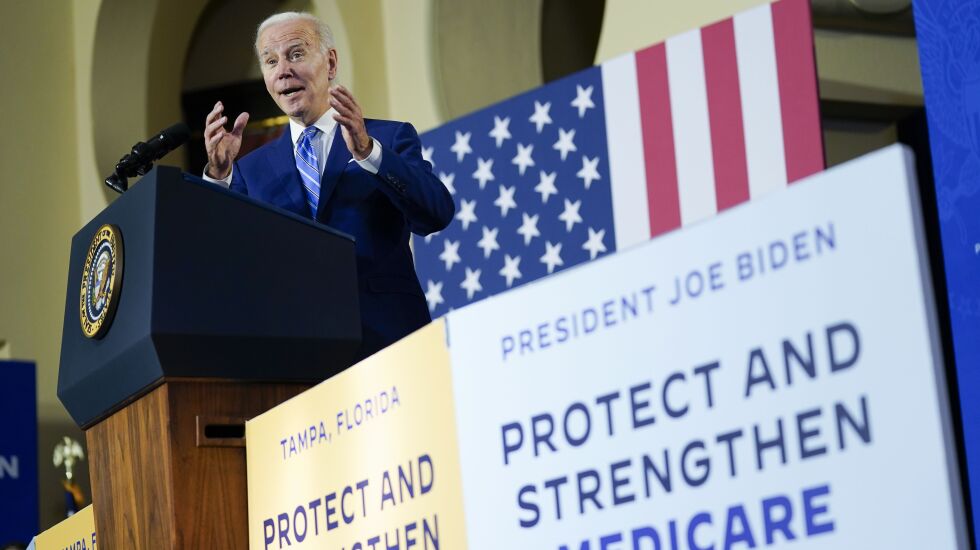
WASHINGTON — Medicare, the federal government-sponsored health insurance that covers 65 million older and disabled people, will be unable to pay full benefits for inpatient hospital visits and nursing home stays by 2031, the annual Social Security and Medicare trustees report warns.
Two years after that, the report says, Social Security won’t have enough cash on hand to pay full benefits to its 66 million retirees.
That forecast regarding the financial safety nets that millions of older Americans rely on — and millions more younger people are counting on — is another prod for politicians to address the fragile financial state of the social programs. And those are expected to only get more expensive in the coming years as more Americans age into eligibility for them.
Kilolo Kijakazi, the acting Social Security commissioner, urged Congress to “address the projected trust fund shortfalls in a timely fashion to phase in necessary changes gradually.”
The report had a bit of relatively good news to go with the bad news: The forecasted go-broke date for Medicare was moved back three years. Last year’s report predicted the government wouldn’t have enough money to start paying those benefits in 2028.
But the date for Social Security’s trust was moved up one year earlier.
Republican leaders say they don’t intend to ax benefits, but they’ve yet to coalesce behind a plan to keep the programs solvent. Last year, members of the House Republican Study Committee proposed raising the age at which someone could qualify for Social Security and Medicare.
“If lawmakers do nothing, in less than a decade, more than 70 million beneficiaries would face an automatic 23% cut, reducing the average benefit by several thousand dollars per year,” said Michael Peterson, chief executive officer of the Peterson Foundation, which describes itself as “a nonpartisan organization dedicated to addressing America’s fiscal challenges and building a stronger economic future.”
“The sooner we act, the easier it will be to ensure the future of Social Security,” Peterson said. “Lawmakers shouldn’t take anything off the table, and the good news is there are plenty of reasonable options on both the revenue and spending side of the ledger to implement fair, gradual and common-sense reforms.”
For years, lawmakers have just pushed along finding solutions to Social Security and Medicare’s troubling math to the next generation. Social Security benefits were last reformed 40 years ago, when the federal government raised the eligibility age for the program from 65 to 67. The eligibility age has never changed for Medicare, with people accessing the medical coverage when they turn 65.
Putting a 10-year deadline on the programs’ solvency might nudge some members of Congress.
Jo Ann Jenkins, AARP’s chief executive officer, called on elected officials to hammer out a plan before it’s too late. Jenkins said the two programs “face long-term funding needs, and Congress must act to find solutions to ensure Social Security and Medicare will be there for the next generation and into the future.”







